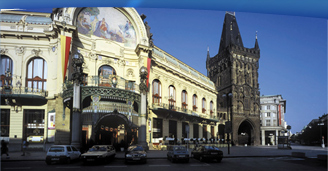Important Dates
Abstract Registration:November 28, 2011
Full Paper Submission:December 12, 2011
Acceptance Notification:February 13, 2012
Camera Ready and Early Registration:February 27, 2012
One Minute Madness Submission:May 6, 2012
Networking Conference:21-25 May, 2012
Networking Conference
40 years of IFIP TC6 – Commemoration ceremony
May 24, 2012: 14:00 – 17:30
Room: 105
The International Federation for Information Processing (IFIP) has more than 10 Technical Committees (TCs). The committee TC6 on Communication Systems is one of the biggest, most active, and oldest of them. It was founded in 1972 and has actually 12 Working Groups (WGs).
The 40 years jubilee event of TC6 will be held in Prague in conjunction with the annual Networking conference (the “flagship event” of TC6). The commemoration will basically consist of two parts, namely:
- on the history, i.e. what has happened in the first 40 years
- on the future, i.e. on the perspectives of the communication area as seen by TC6.
The presentations of the event will be given by some older “gurus” of TC6 as well as by some promising “young revolutionaries”.
| Programme | ||
| Part 1 | Chair: Guy Leduc | |
| Prologue | Vojtech Petracek (Vice-Rector for Science and Research, CTU, Czech Republic) | 14:00 - 14:10 |
| Prehistory | Vint Cerf (Google, United States) VIDEO The early years of INWG and IFIP WG 6.1 | 14:10 - 14:20 |
| Past | Louis Pouzin (Internet Pioneer, France) What difference between 因 特 网 and internet ? | 14:20 - 14:50 |
| Present | Jon Crowcroft (University of Cambridge, United Kingdom) The way to move forward in networking | 14:50 - 15:20 |
| Pause | 15:20 - 15:45 | |
| Part 2 | Chair: Gunnar Karlsson | |
| Progress | Dina Katabi (Massachusetts Institute of Technology, United States) Cutting through the Layers: High-Performance Wireless Networks | 15:45 - 16:15 |
| Perspectives | Adam Dunkels (Swedish Institute of Computer Science, Sweden) Networking in the small, in the large | 16:15 - 16:45 |
| Pablo Rodriguez Rodriguez (Telefonica R&D, Spain) The Next Wave of Telco's Innovation | 16:45 - 17:15 | |
| Poetry | Otto Spaniol (RWTH Aachen, Germany) Self-gratulation of IFIP TC6 for its 40th birthday | 17:15 - 17:30 |
Part 1
Vint Cerf (Google, United States) VIDEO
The early years of INWG and IFIP WG 6.1
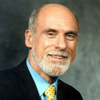
Vinton G. Cerf is vice president and Chief Internet Evangelist for Google. He is responsible for identifying new enabling technologies and applications on the Internet and other platforms for Google. Widely known as one of the "Fathers of the Internet," Cerf is the co-designer of the TCP/IP protocols and the architecture of the Internet.
Vint Cerf served as chairman of the board of the Internet Corporation for Assigned Names and Numbers (ICANN) from 2000-2007 and has been a Visiting Scientist at the Jet Propulsion Laboratory since 1998. Cerf served as founding president of the Internet Society (ISOC) from 1992-1995. Cerf is a Fellow of the IEEE, ACM, and American Association for the Advancement of Science, the American Academy of Arts and Sciences, the International Engineering Consortium, the Computer History Museum, the British Computer Society, the Worshipful Company of Information Technologists and a member of the National Academy of Engineering.
Cerf is a recipient of numerous awards and commendations in connection with his work on the Internet, including the US Presidential Medal of Freedom, US National Medal of Technology, the Prince of Asturias Award, the Tunisian National Medal of Science, the Japan Prize, the Charles Stark Draper award, the ACM Turing Award and eighteen honorary degrees. In December, 1994, People magazine identified Cerf as one of that year's "25 Most Intriguing People."
Abstract
The International Network Working Group (INWG) was created in October, 1972 after the first International Conference on Computer Communication (ICCC) at which the ARPANET was publicly demonstrated for the first time. A Terminal IMP (Interface Message Processor) was installed in the basement of the Washington Hilton Hotel and about three dozen terminals of varying kinds were attached. Sites around the ARPANET were demonstrated, largely by the graduate students who had built them.
In a gathering of about two or three dozen packet networking researchers from around the world, it was concluded to form the INWG, using Steve Crocker's open Network Working Group as a model. The NWG had developed the ARPANET host and application protocols. Steve was too busy at ARPA do lead this new effort but proposed that I could do this as part of my research duties at Stanford University. So I became the first chairman. After a few years of operation, Louis Pouzin suggested to Alec Curran, then the head of IFIP Technical Committee 6 (Telecommunications) that INWG ought to be incorporated into the IFIP system. Alec and I prepared proposals for presentation to IFIP and TC-6 leaders and, if memory serves, INWG became IFIP WG6.1 in late 1994 or early 1995. Since that time, IFIP WG6.1 has pursued a range of technical objectives. Among the most powerful, in my view, were the focus on tools for analyzing and validating protocol operation. While the proof of correct operation proved very difficult for any sort of complex protocol, the effort to model and analyze tended to expose mistakes in design in a systematic way.
Louis Pouzin (Internet Pioneer, France)

Louis Pouzin has acquired an international reputation as an expert in computer communications and networks. Most of his career has been devoted to the design and implementation of computer systems, such as CTSS, the first large time sharing system at the Massachusetts Institute of Technology, or the CYCLADES computer network and its datagram packet switching network, from which TCP/IP was derived.
Besides his experience in leading teams of top professionals, he is known internationally for his participation in early network standardization within IFIP, ISO and CCITT, and his numerous publications, many of which have become educational material in network courses. As a lecturer, he is especially appreciated for presenting complex subjects in clear and understandable terms.
He graduated from École Polytechnique in Paris. He is past chairman of IFIP-TC-6 (data communications). He has published more than 80 articles and a book on computer networks. Among awards he has received: IFIP Silver Core, Bulgarian Academy of Sciences Marin Drinov, ACM SIGCOMM, IEEE Internet, French Légion d'Honneur, and ISOC Hall of Fame Pioneers.
Presently he is Project Director with EUROLINC, a non-profit organization promoting the use of native languages in the Internet.
Abstract
IFIP-TC.6 was lucky to be born at the very beginning of the data networks age. This timing in history attracted top experts in network design, management, instrumentation, modeling and protocol validation, security, standardization, analysis, etc. A sticky point remains unexplored though: politics. As commerce, power grab, traditions, fraud, crime, or war rely increasingly on networking, design and operation cannot be exercised simply from technical standpoints. Present trends from far East to far West lead to an extensive control of all human activities far beyond proportionate justifications. This appalling deviation from a civilized equilibrium must be kept in check. But how ?
Jon Crowcroft (University of Cambridge, United Kingdom)
The way to move forward in networking
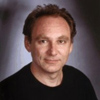
Jon Crowcroft has been the Marconi Professor of Communications Systems in the Computer Laboratory since October 2001. He has worked in the area of Internet support for multimedia communications for over 30 years. Three main topics of interest have been scalable multicast routing, practical approaches to traffic management, and the design of deployable end-to-end protocols. Current active research areas are Opportunistic Communications, Social Networks, and techniques and algorithms to scale infrastructure-free mobile systems. He leans towards a "build and learn" paradigm for research.
He graduated in Physics from Trinity College, University of Cambridge in 1979, gained an MSc in Computing in 1981 and PhD in 1993, both from UCL. He is a Fellow of the ACM, a Fellow of the British Computer Society, a Fellow of the IET and the Royal Academy of Engineering and a Fellow of the IEEE.
Abstract
The way to move forward in networking is not to guess the future but to do what people tell you not to do. In this talk, I will report on 30 years of being contrary, and explain what this is motivating me to do now about the present (and future) Internet. I expect disagreements.
Part 2
Dina Katabi (Massachusetts Institute of Technology, United States)
Cutting through the Layers: High-Performance Wireless Networks
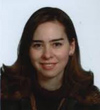
Dina Katabi is a professor in the EECS Department, and a member of the Computer Science and Artificial Intelligence Laboratory. She has joined the MIT faculty in March 2003, after completing her PhD at MIT. Katabi's work focuses on wireless networks, mobile applications, network security, and distributed resource management. She has award winning papers in ACM SIGCOMM and Usenix NSDI. She has been awarded a Faculty Research Innovation Fellowship in 2011, the IEEE William R. Bennett prize in 2009, a Sloan Fellowship in 2006, the NBX Career Development chair in 2006, and an NSF CAREER award in 2005. Her doctoral dissertation won an ACM Honorable Mention award and a Sprowls award for academic excellence.
Abstract
The traditional layered structure of networked systems has created barriers between researchers working on physical transmission (signal processing, coding, and communication theory) and network protocols (medium access, routing, and applications). As networking techniques become more sophisticated, these barriers increasingly inhibit the productive flow of information necessary to solve important networking problems. This problem is particularly relevant in the wireless domain where the shared nature of the broadcast medium conflicts with the isolation assumed in a layered abstraction.
In this talk I show how a more integrated view of the network stack can deliver fundamental design shifts that produce significant performance and functionality benefits. In particular, with standard techniques, interference causes packets to be dropped at the physical layer. I show how to use an integrated technique that leverages the structure of the interference to jointly decode multiple corrupted packets, eliminate the throughput reduction otherwise caused by interference. I also present a novel technique that makes the network stack act like a linear transform, and hence enables mobile video that does not glitch or stall.
Adam Dunkels (Swedish Institute of Computer Science, Sweden)
Networking in the small, in the large
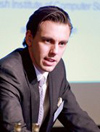
Adam Dunkels is an experimental computer scientist in the Computer Systems Laboratory of the Swedish Institute of Computer Science, Kista, Sweden, and the founder and senior scientist of the Networked Embedded Systems group. His research interests are system software and low-power IP networking for small embedded systems and wireless sensor networks. Adam has written some well-known software for networked embedded systems that is used in satellites, air planes, racing car engines, oil bore holes, cargo ships, TV-transmission equipment, and in products from hundreds of companies, including ABB, Altera, BMW, Cisco, Ericsson, GE, HP or Xilinx.
Abstract
Networking has undeniably been tremendously successful in driving real-world progress over the past decades. The Internet, while initially driven by a technology push, has in a short time transformed the world as we know it. We have recently been seeing networked smartphones and the cloud drive a similar transformation, only faster. Many believe the next step to be called the Internet of Things - massive amounts of tiny, networked, sensors get connected to the Internet, fueled by a decade of academic research and technology progress. What happens when millions - nay, billions - of networked sensors connect the physical world to the Internet? What will drive progress - technology, users, business, or academia? Can the lone researcher still hope to make a difference?
Pablo Rodriguez Rodriguez (Telefonica R&D, Spain)
The Next Wave of Telco's Innovation

Pablo Rodriguez is Director of Research and Director of Telefonica Digital Barcelona R&D Lab. He is also an adjunct faculty professor at the department of computer science at Columbia University, New York. He has developed his career in the United States as a software architect and entrepreneur in three Silicon Valley start-ups (Inktomi, which provided the search engine of MSN, Yahoo and AOL; Netli and Tahoe Networks). He also worked at Microsoft Research in Cambridge and Bell-Labs in the USA. As a result of his work, Pablo has more than fifty scientific publications and patents. He has winning paper awards, including ACM/IMC and WWW, and was awarded the "Prix de la Recherche" for academic excellence.
Twitter: @pabloryr
Abstract
Exponential data growth and slowly growing revenues are carrier's dilemmas today. To meet such a challenge, it is the time for Telcos to focus on innovation. While the early stage of Telco innovations focused around their core technologies and business around voice and data, the next decade looks very different.
In this talk I will discuss how the Internet paradigm, knowledge of complex systems, and core networking expertise can be used as the basis for innovation in many other areas. A few example of those are privacy, trust and reputation, world-wide TV delivery, peer to peer connectivity, connecting the next 50 Billion things, or network economics. However, the real breakthrough innovations may come from more adjacent and far fetched multidisciplinary areas including psychology, vanguard cooking, or the science of soccer playing.
Otto Spaniol (RWTH Aachen, Germany)
Self-gratulation of IFIP TC6 for its 40th birthday
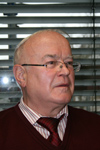
Otto Spaniol is professor emeritus at RWTH Aachen University (Germany) for "Communication and Distributed Systems". He has been chairman of IFIP TC6 from 1992 til 1997 and then again from 2004 til 2006. Since 1983 he serves as German national delegate for this Technical Committee.
